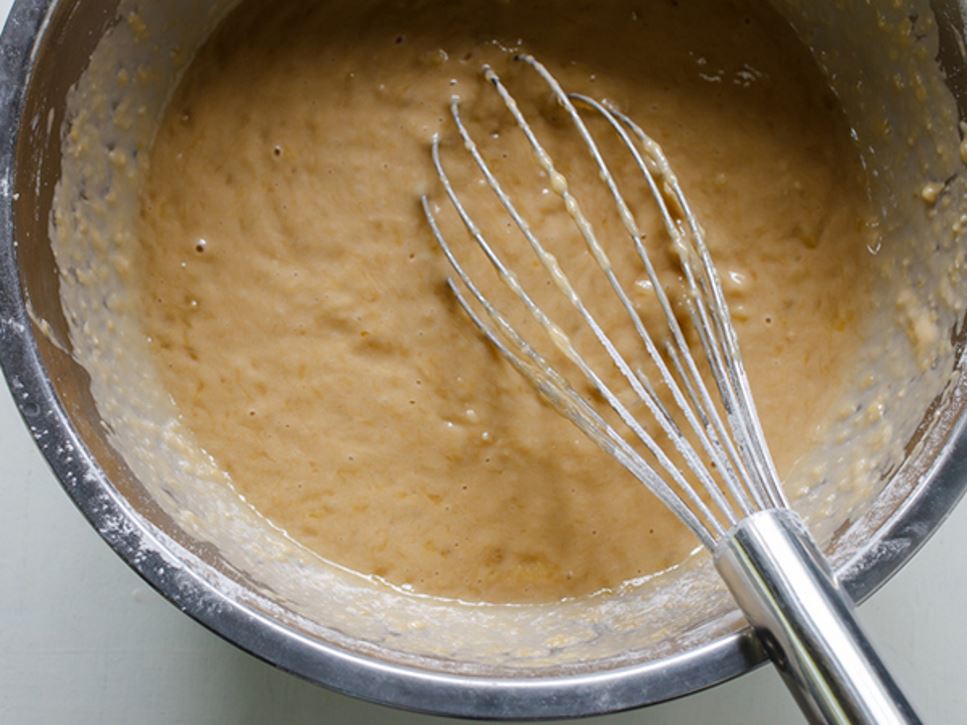According to the 2020-2025 Dietary Guidelines for Americans, a healthy eating plan should limit the amount of calories from added sugars and saturated fat. So, does that mean no desserts?
While baked goods in particular have a reputation for being a major source of both added sugars and solid fats, they can still be an enjoyable part of a well-balanced eating pattern. Follow these tips to give baked goods a nutritional boost and help reduce their added sugar and saturated fat content.
Watch Portion Size
Keeping portion sizes in check is a primary strategy for incorporating baked goods into a healthful eating pattern. Make portion control easier by preparing miniature desserts such as mini cupcakes. Or, cut brownies and sheet cakes into 2-inch squares and portion cookie dough using a 1-tablespoon scoop.
Ingredients Matter
Use high-quality ingredients for a more flavorful product that will satisfy cravings even with smaller portions. For example, use vanilla beans instead of extract, opt for high-quality chocolate and make sure your spices are fresh for the boldest flavor.
Incorporate Nutrient-Rich Ingredients
Instead of focusing on what to cut out, why not focus on nutritious ingredients that can be added to your recipe?
- Add a Fruit or Vegetable
Try adding shredded or pureed apple, carrot, banana and pumpkin to recipes to boost nutrients, flavor and moisture. You can use these ingredients to add extra flavor and replace some of the butter or oil in the recipe.
- Try a Whole-Grain Flour
White whole-wheat flour can be substituted one-for-one for all-purpose flour in most recipes. You also can replace up to half the all-purpose flour in a recipe with a whole-grain flour without making any major adjustments to the recipe.
- Experiment with Recipes That Use Less-Common Flours
Try experimenting with recipes such as savory pancakes and waffles that call for chickpea flour. Or try recipes with almond flour, which works well for crusts and can be incorporated into dough for a big punch of flavor and a different nutrient profile than wheat flour.
- Use Low-Fat or Fat-Free Dairy Products
Use lower fat versions of milk, buttermilk and yogurt in baking recipes to add protein and calcium. Consider swapping cream cheese frosting, which is high in calories and saturated fat and has minimal nutritional value, for a higher protein frosting made from low-fat Greek yogurt.
Reduce Saturated Fat and Added Sugars
You can do this in a number of ways. For example:
- Swap Butter for Heart-Healthy Oil
When modifying a favorite recipe, you generally can trade some of the butter for a heart-healthy oil, such as canola oil. Don't replace all the butter with oil or you risk sacrificing texture. - Simply Cut Down On Sugar
As a general rule, you can reduce sugar in a recipe by about 25% without noticeable differences. For instance, if a recipe calls for 4 tablespoons of sugar, reduce the amount to 3 tablespoons. When reducing sugar, you may need to increase the liquid in a recipe.
Focus on occasionally enjoying small portions of your favorite treats and experiment with creating healthier versions of favorite recipes for more nutrients in each delicious bite.
Find a Nutrition Expert
Looking for credible nutrition information and recommendations? The Academy of Nutrition and Dietetics' network of credentialed food and nutrition practitioners are ready to help!

